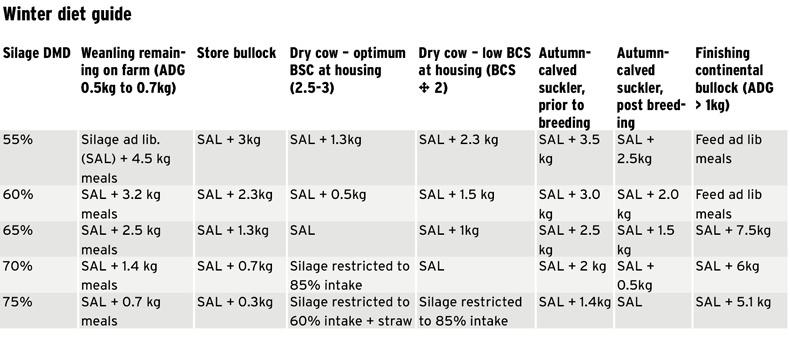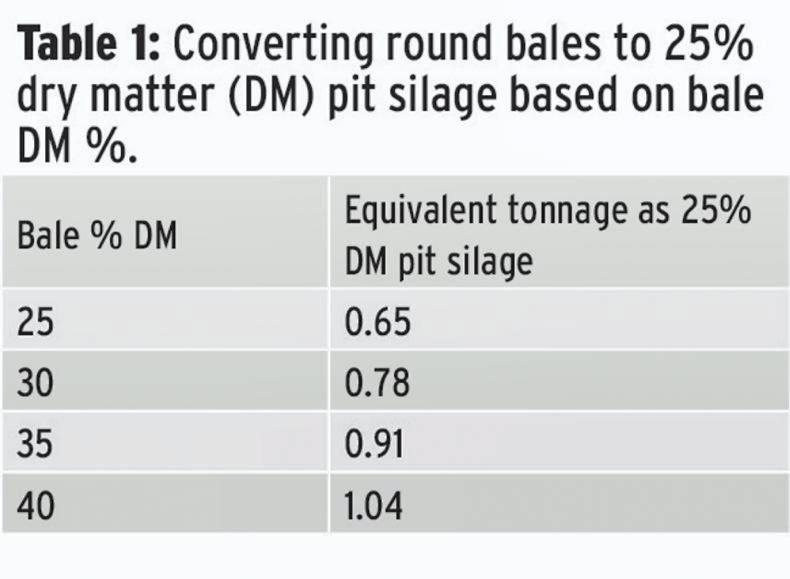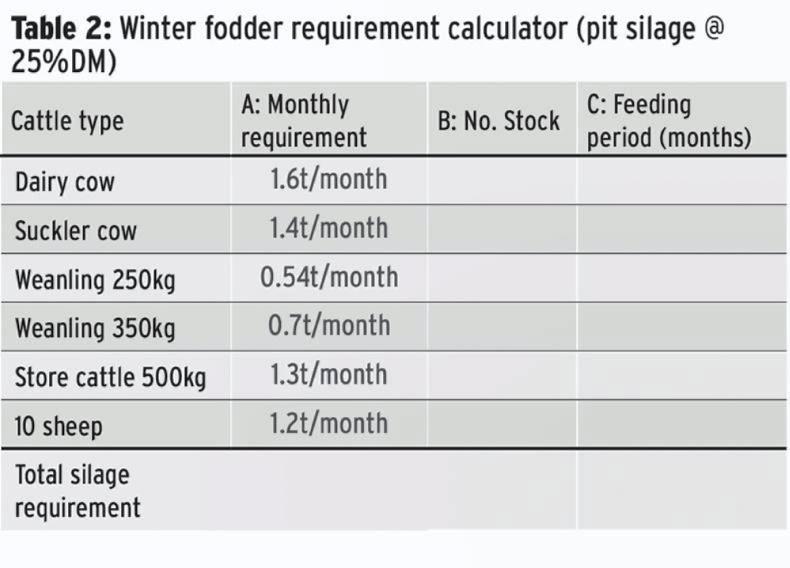Most of us feed meals at some point during the winter, but do you know what the ingredients in your compound ration look like?
All of these will be present at our ploughing feed demo, as well as specialists to advise you on which ingredients you should, and shouldn’t, be basing your rations on.
Name them all and there’s a prize up for grabs!
Silage
With the rapid development of forage technology, more and more of us are getting our silage tested – a no-brainer for everyone wintering cattle.
Winter diets should be formulated based on these results and the table below can act as a guide.

Silage budget
How much silage have I made this year, and how much do I need this winter?

Figure 1 outlines the measurements (length/width/height) needed to calculate tonnage in a silage pit.
Take measurements in feet and multiply A x B x C. Divide the final figure by 45. Where the silage is single-chopped, divide by 50 as silage will not be as compacted.

Those making bales can use Table 1 to calculate each bale’s equivalent weight as 25% dry matter pit silage.
This will depend on the length of the wilting period and the weather at harvest.
Bales mowed and cut on the same day in relatively dry conditions will have a dry matter of 25%.
A 24-hour wilt will lift this figure to 30%, while a 48-hour wilt in hot sunny weather will produce 40% dry matter bales.
What is required?
Once silage stocks are known, calculate what exactly is needed on a per-head basis each month. Table 2 outlines the amount of silage required for each individual livestock class, monthly.
Use the table to calculate your demand for fodder this winter. In terms of feeding period length, allow for a worst-case scenario.
